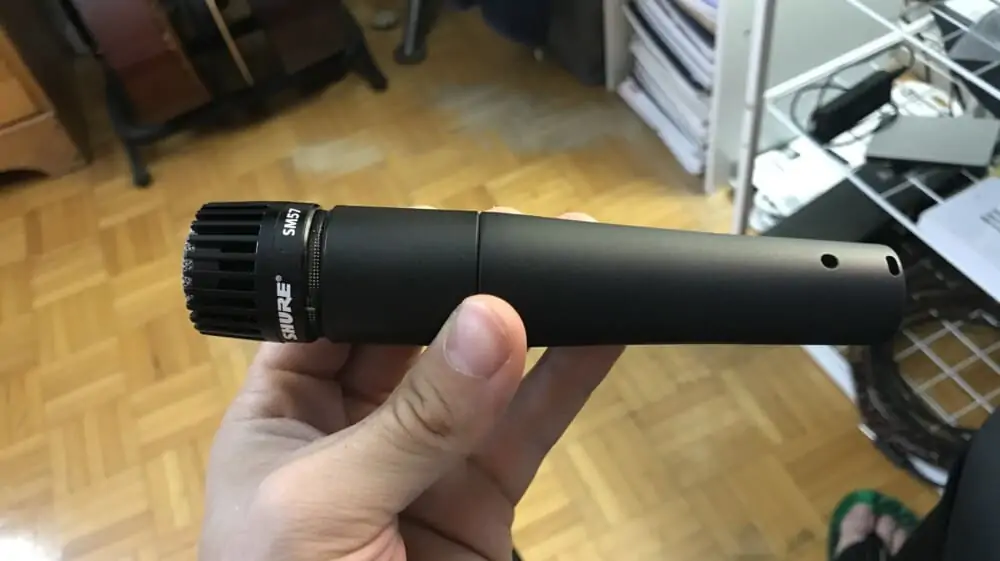Mixing is a different kind of art form in the sense that it’s audio-based. And one of the useful conceptual frameworks that mixers use is the idea of the stereo image. For instance, are the sounds coming from the left or the right? Front, or back?
A consequence of this is that some instruments may seem louder, quieter, or further back than others. And how the mix sounds depends on a number of factors, including the genre, the instruments used, and the general vibe of the track. One question people often ask though is about the drums and how loud they should be mixed relative to each other.
The guitar and drums should be close to the same volume. The guitar should be loud enough so as not to be overshadowed or drowned out by the drums. The same principle generally applies to the other instruments too.
Many mixers start with mixing the drums and bass guitar after they’ve listened to the song once and decided how to proceed. This creates a foundation for the guitars and vocals but doesn’t necessarily mean that guitars will be louder.
There are specific parts of the drum kit that will be emphasized more than others, but there will also be guitar parts that are more prominent in a mix, like for solos or intros. Let’s talk about a few other factors as well as some other useful ideas.
A Brief Guide to Mixing Guitars and Drums
Frankly, when it comes to things like mixing, there are no hard rules. But there are common practices that act sort of like guidelines. Musicians and others often come up with rules, boundaries, and self-imposed limitations that aren’t necessary.
The truth is that they’re just looking for a way to reduce uncertainty because they want to come up with something that sounds good to other people and with minimal error.
No one wants to come out with a finished product that sounds bad, and following “rules” is a way to avoid that. Or so they think, anyway.
Getting back to the drums and the guitar, there is no rule as to how they should be mixed together. In my mixing guide on Producer Society, I explored some different ways how I go about mixing instruments, but the long and short of it is that you just have to use your ears.
That said, there are some useful books you could read that’ll help with this. All of the links below will take you to Amazon. I recommend you read these books in the order that I’ve presented, starting with Tim Dittmar’s book.
Beginners
Intermediate to Advanced
1) Start Out With the Same dB
![Drums and Guitar - Should Guitar Be Louder Than Drums [ANSWERED]](https://travelingguitarist.com/wp-content/uploads/2021/12/Drums-and-Guitar-Should-Guitar-Be-Louder-Than-Drums-ANSWERED-1-1.jpg)
Set the volume of the drums and the guitar at the same level, ie, -15dB. Slowly increase the guitars until it’s louder than the drums, but not to the point where they’re overbearing or annoying. The same rule goes for when you’re practicing along to drums too (using my guide).
Interestingly, 1 dB can often be the difference between a mix that sounds perfect and not quite right. Pay close attention to the incremental changes in volume that happen when you increase or decrease by small amounts.
2) Mix the Snare, Kick, and Hi-Hats First
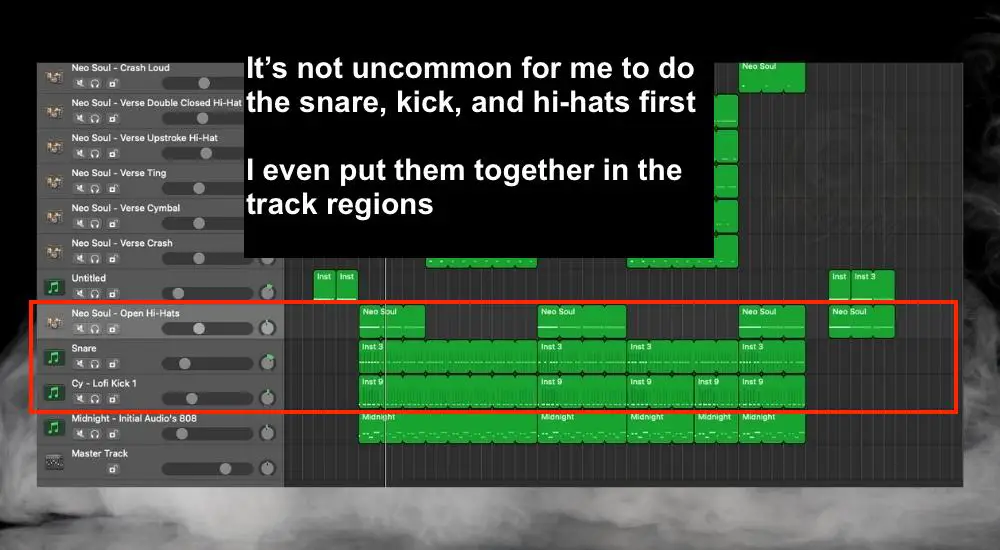
I’ll usually start by getting the snare, kick, and hi-hats matched up with the guitars first. These are typically the most prominent parts of the kit in popular music, so by mixing these first, you’ll have a good portion of the job already done.
Again, start with the guitars and the drums at the same dB, and slowly increase the volume of the guitars until they sit nicely together, without being overbearing or uneven.
3) Increase the Volume of the Quieter Parts of the Drum Kit
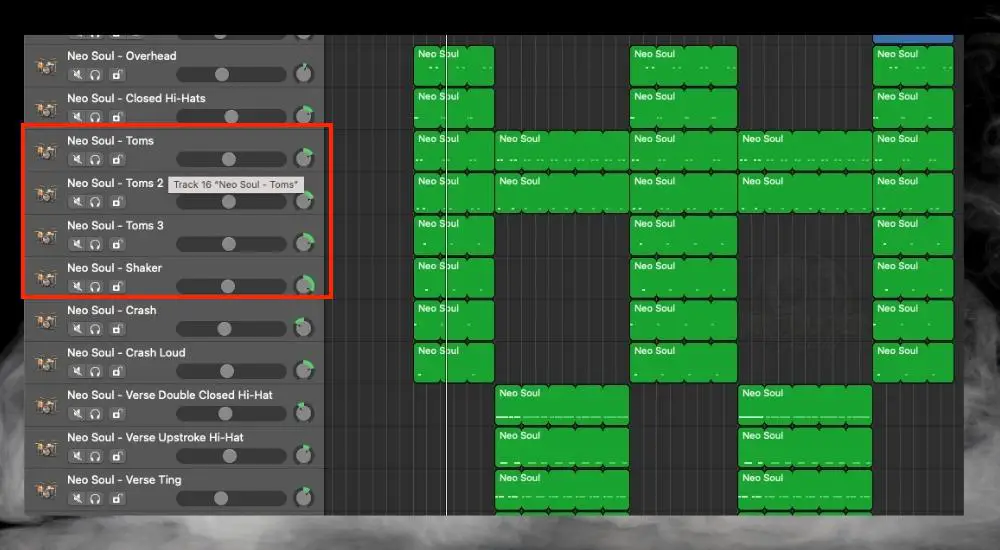
After I’ve gotten the volume to the point where I’m about 90% done, which is really the easiest part, I’ll start attacking the quieter parts of the kit one at a time. The quietest parts of the kick are usually the toms, low-velocity cymbals, and (sometimes) the kick.
The aforementioned parts of the kit usually require a little more time and dedication to get just quite right because they’re not terribly loud, to begin with. Also, some of them aren’t hit all that often, so you won’t have as many chances to get it right.
Additionally, bassy-sounding instruments aren’t as easy to hear because of the nature of the frequency so ensure you haven’t left them out or devalued them at all. Like I’ve said before, bass is important in music.
Quick Tip: For parts of the kit that aren’t repeated in the song, use your DAW’s cycling feature to playback the same part over and over again.
4) Pay Attention To How They Sound Post-Compression
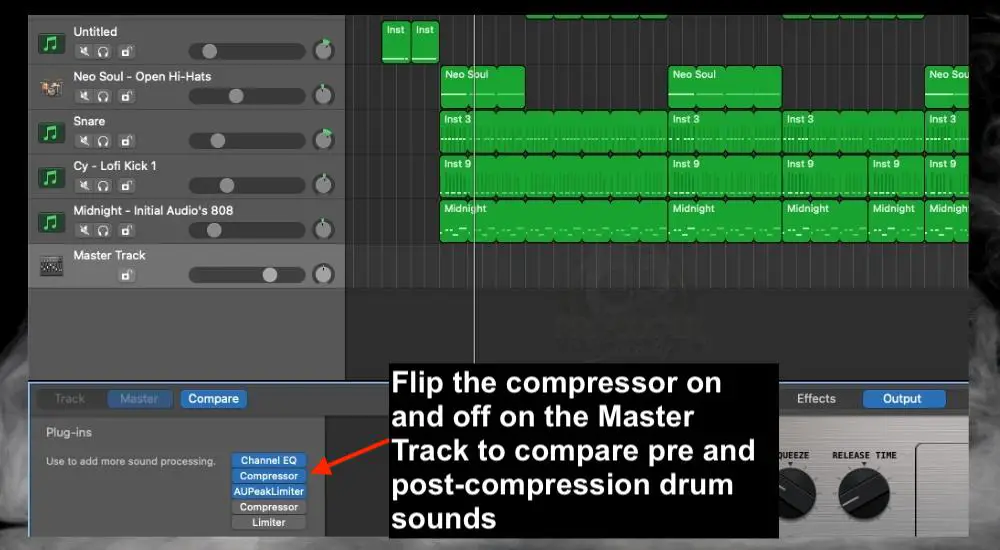
Most mixers and engineers nowadays will apply compression to the master channel. It sounds great, but what will usually happen is that there will be an increase in volume. Pay attention to how the volume of the drums and guitar have changed once you’ve added compression to the master track.
You may have to go back and decrease or increase certain parts of the drum kit or the guitars to make everything match again. The same thing can happen with limiting. High-frequency parts of the kit tend to be the most susceptible to this, ie, hi-hats and cymbals.
You’ll find that your hi-hats or cymbals will start “hissing” at you, and obviously, that’s no good. This is called sibilance and it can definitely occur after you’ve applied compression to your track.
Quick Tips for Mixing Drums and Guitars
1) Some Genres Require Specific Instruments to Be Higher In The Mix

For a lot of music, it is important for the snare to be higher in the mix than the other drums, but it may not necessarily be louder than the guitar mix. The idea is to cut through and carve out different parts of one instrument to allow space for another.
A singer-songwriter-type track may have shallow drums, and the guitars may have their frequencies edited out entirely to make room for the vocal melodies. One common practice in this genre is to have the guitars mixed so the strumming is the only audible part.
You’ll hear this kind of thing in Taylor Swift and Ed Sheeran’s songs. It’s almost as if the guitar is acting more as a rhythmic instrument at that point, rather than a melodic one. I guess they do it this way to make room for the vocals.
It really depends on the genre. For example, you would never mix a metal song in this way. If there are acoustic guitars in a metal song, it’s important that the notes are articulated well because most metal fans want to hear the guitars as clear as day.
2) Is The Guitar Player The Highlight Of The Band?
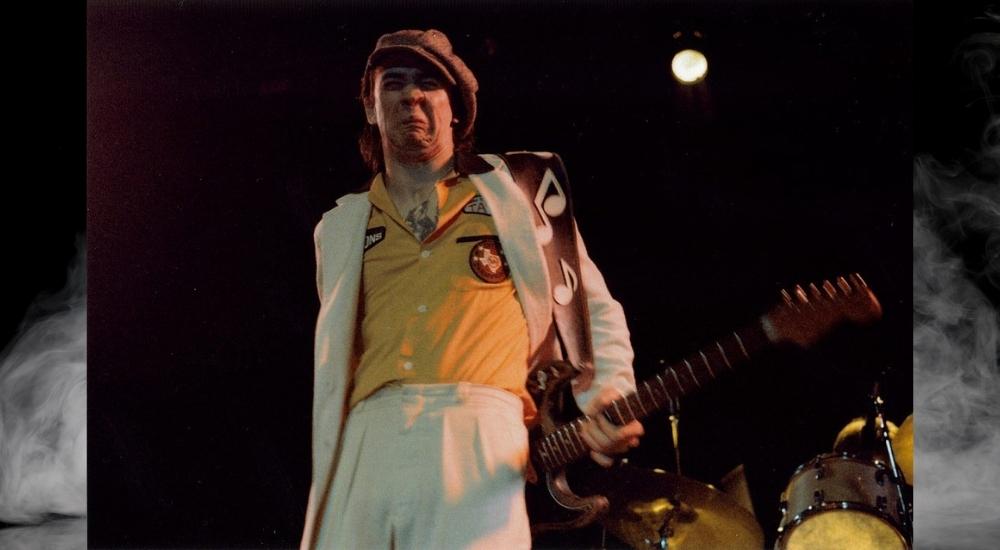
Guitar virtuoso types will definitely have their guitar as the front and center of the mix. Think about it, because it just makes sense. An artist like Steve Vai, Plini, or Intervals, will have the guitars as the most prominent instrument because it’s guitar-focused music.
That doesn’t necessarily mean you won’t be able to hear the drums at all, because often the drums are really amazing in this type of music too. It’s just that if the audience is expecting to hear the guitars, you’ll need to have them louder in the mix.
If you’ve got a great acoustic guitar part in an instrumental rock/metal song, the audience will want to hear it. Like I said before, it’s not going to be like an Ed Sheeran song where you can only hear the sound of the pick hitting the strings.
3) The Drummer Is The Easiest To Get Buried In a Mix
![Drum Kit - Should Guitar Be Louder Than Drums [ANSWERED]](https://travelingguitarist.com/wp-content/uploads/2021/12/Drum-Kit-Should-Guitar-Be-Louder-Than-Drums-ANSWERED.jpg)
Next to the bassist (case-in-point, Metallica’s And Justice For All…), the drums are notorious for getting buried in the mix. The bassist almost always has to be turned up, or they don’t get a second whiff, but the guitar has to be up with the vocals.
Because it’s so easy to bury the drummer, I find that I have to pay careful attention to each part of the kit. It’s not uncommon for me to forget parts of the kit altogether. If there is only one tom, for instance, and it’s on a separate track, it’s easy to forget about it.
How you avoid this is just by soloing the drums and making sure that everything is there and audible. Listen to the drums in the context of the guitars and the rest of the mix, but also make sure to solo them as well.
4) The Drums and Bass Were Recorded at Different dBs
A common problem that artists run into is when different tracks have been recorded at different volumes. This means they’ll have to be brought up or down through other means. If that is the case, you’ll have to pay careful attention to ensure the guitars don’t bury the drums.
You don’t run into this if a band all goes into the studio together or if everyone records at the same level with around the same quality of the microphone. If the foundation is already flawed or doesn’t correctly align, it may take some maneuvering to get it right.
A Shure SM57 is a great mic that’s good for micing almost any type of instrument, so if you are looking for a catch-all microphone that can do anything, this is a great start. An AT2021 is also good for drum overheads.
How Loud Should Drums Be In A Mix?
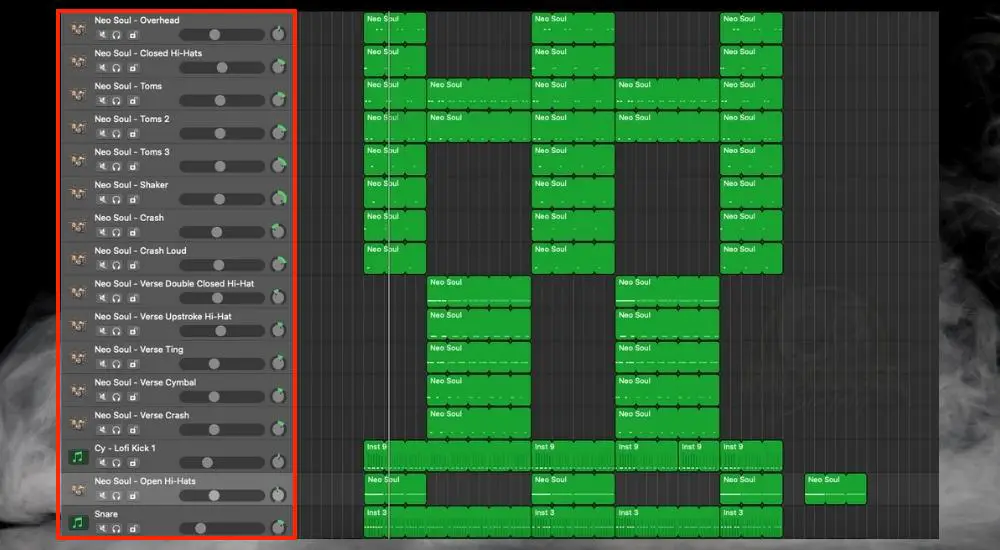
If you want to balance your drums, start by muting everything in the mix but your drums. Set everything so you have plenty of headroom, ie, -10dB to -15dB. Not at peak level, save the loudness for the mastering stage.
If you need to hear them louder, turn up your output or get better speakers, so you focus on what is too loud in the mix, not what is too quiet.
Depending on the song, genre, or dynamics, the drums should be as loud as any other instrument unless there is a drums solo, fill, or emphasis on a particular drum or part of the beat.
Ultimately, you just want to pay attention to how loud everything is and whether it sounds natural. Don’t forget that how the drums are panned can make a huge difference in how loud everything sounds.
The instruments should not overpower each other, they need to complement each other – and that’s a rule that applies to all of your mix. If you see one of the drums peaking, you can either lower everything for more headroom or lower that drum by a few dB.
Make sure to EQ and cut out anything you don’t want that may interfere with the low end, like making room in the kick’s low end by cutting the same frequency in the bass.
Important Things to Note About Mixing Drums and Guitar
1) These Are Guidelines and Not Rules
What I’ve mentioned here in this article are merely tips that I’ve come up with from my own experience as well as what I’ve been taught. Everyone has their own way of going about things, so experiment, try different things, and never let someone get you down.
2) Sign Up to Punkademic For Inexpensive Mixing Tutorials

Punkademic probably has the most underrated courses on everything music-related. I’ve sung their praises before regarding their music theory course, but the mixing one is great too. Don’t be afraid to check these out if you want a cheap crash course.
Gear Mentioned
1) Timothy Dittmar’s Audio Engineering 101
2) The Mixing Engineer’s Handbook from Bobby Owsinski
3) The Art of Mixing by David Gibson
4) Mixing Audio from Roey Izhaki
5) Zen and the Art of Mixing from Mixerman
6) Shure SM57

 Written By :
Written By :